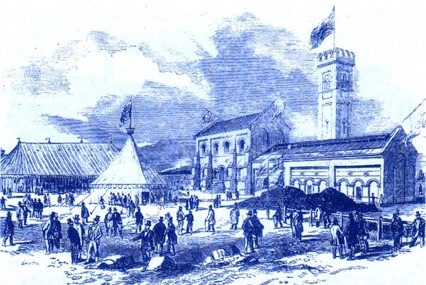In Victorian London, the city faced numerous challenges in maintaining proper sanitation. Overcrowding, poor waste management, and inadequate infrastructure led to unsanitary conditions that contributed to the spread of diseases. However, amidst these challenges, a series of revolutionary advances in sanitation systems emerged, transforming the city’s landscape and improving public health. In this article, we will delve into the remarkable developments that took place during this period, highlighting their significance and the lasting impact they had on Victorian London.
The State of Sanitation in Victorian London
To understand the magnitude of the advancements made, it is essential to comprehend the dire state of sanitation in Victorian London. The rapid population growth and inadequate infrastructure resulted in a lack of proper waste disposal systems. Residents relied on cesspits, open sewers, and even the River Thames for waste disposal, leading to a putrid and disease-ridden environment.
The Great Stink and the Catalyst for Change
One significant event that acted as a catalyst for change was the infamous “Great Stink” of 1858. During that summer, the hot weather exacerbated the stench emanating from the polluted River Thames, permeating throughout the city. The unbearable odor forced the Parliament to temporarily suspend its sessions and sparked public outrage, demanding a solution to the sanitation crisis.
Joseph Bazalgette: The Mastermind Behind the Sewer System
In response to the Great Stink, the renowned engineer Joseph Bazalgette was appointed to design and construct a comprehensive sewer system for London. Bazalgette’s visionary plan involved constructing over 1,100 miles of underground brick sewers that intercepted the city’s waste before it could reach the Thames. This innovative solution not only eliminated the foul odor but also significantly reduced the spread of waterborne diseases.
The Metropolitan Board of Works and Public Health Act of 1875
To oversee the implementation and maintenance of the new sewer system, the Metropolitan Board of Works was established in 1855. The board played a pivotal role in ensuring the success of Bazalgette’s project and enforcing sanitation regulations. However, it was the Public Health Act of 1875 that provided the legal framework for sanitation improvements, leading to the establishment of sanitary authorities responsible for public health and sanitation across London.
The Flushing Revolution: Water Closets and Indoor Plumbing
While the sewer system tackled the issue of waste disposal, another significant advancement in sanitation came in the form of water closets and indoor plumbing. Prior to this, most households relied on primitive methods such as chamber pots or outdoor privies. The introduction of water closets revolutionized personal hygiene, as waste could be efficiently flushed away, reducing the risk of contamination and disease transmission.
The Impact on Public Health
The combination of the sewer system and the widespread adoption of water closets had a profound impact on public health in Victorian London. The dramatic decrease in waterborne diseases, such as cholera and typhoid fever, can be attributed to these advancements. The improved sanitation systems not only saved countless lives but also enhanced the overall quality of life for Londoners.
Architectural Innovations: Hidden Beauty Beneath the Streets
Beyond their practical functionality, the sewer systems of Victorian London showcased remarkable architectural innovations. The construction of the underground brick sewers required meticulous planning and engineering expertise. The result was an intricate network of tunnels and chambers, often adorned with ornate brickwork and architectural flourishes. Today, some of these hidden marvels can still be admired, a testament to the craftsmanship and vision of the era.
A Lasting Legacy
The advancements in sanitation systems during Victorian London left a lasting legacy that extends far beyond that period. The sewer system designed by Joseph Bazalgette served as a model for cities around the world, inspiring similar infrastructure projects. The concept of indoor plumbing and water closets also became the standard for modern homes, improving sanitation and hygiene globally.
In conclusion, the revolutionary advances in sanitation systems during Victorian London transformed the city and improved public health in extraordinary ways. The implementation of the sewer system, led by Joseph Bazalgette, and the widespread adoption of water closets revolutionized waste management and personal hygiene. These advancements significantly reduced the spread of diseases, improving the quality of life for Londoners and leaving a lasting impact on cities worldwide. Victorian London’s triumph over the sanitation crisis stands as a testament to human ingenuity and the ability to overcome challenges through innovation and determination.
